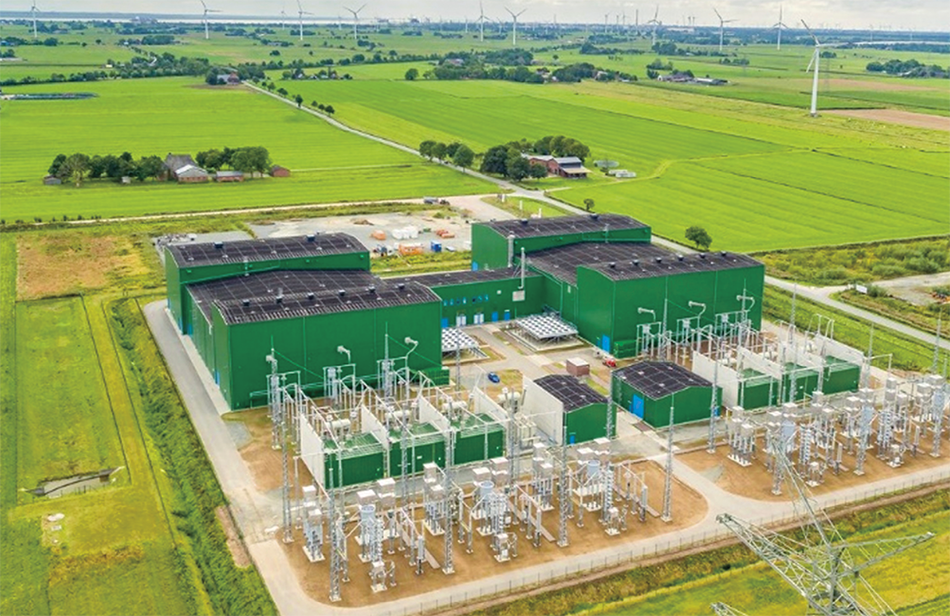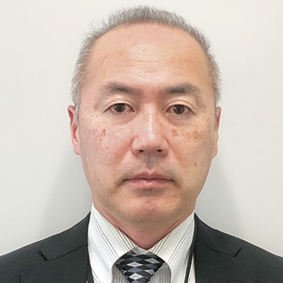GLOBAL INNOVATION REPORT1Accelerating Energy Transition and Rapid Increase of HVDC
Highlight
It is becoming more essential to share resources and reserves across different nations and regions to achieve carbon neutrality. The carbon neutrality raises the utilization of more remote renewable energy sources located far from the demand side. This makes high-voltage direct current (HVDC) a key technology towards carbon neutrality transition. It provides needed infrastructure for transmission of renewable energy over long distances. The number of HVDC projects are increasing rapidly all around the world, a trend that will only accelerate. As an HVDC pioneer supplier and market leader, Hitachi Energy is working hard to meet this high demand for HVDC technology. This article is about the latest trends in HVDC market and technology developments.

Introduction
Figure 1 | HVDC Projects in Europe (ENTSO-E Area)
Figure 2 | Cumulative Installed Global Capacity and Future Projections for VSC HVDC
Despite the grid under the European network of transmission system operators (ENTSO-E)*1 coverage has already reached 93 GW of cross-regional and international transmission links, their ten-year network development plan(1), published in April 2022, shows the construction of a further 64 GW of capacity over the coming eight years up to 2030. Figure 1 illustrates the existing, under-construction, and also planned projects in ENTSO-E area. By strengthening cross-regional interconnections, ENTSO-E expects to reduce annual carbon emissions by 14 Mt and save five billion euros on generation costs. This will avoid losses of 17 TWh renewable energy curtailment in 2030 by omitting the construction of local ancillary power. In other words, the acceleration in HVDC construction is being driven by its cost and economical benefit. Similar trends can be seen in North America and other regions, with a rapid growth in HVDC links all around the world.
In Japan, there is a considerable debate on ways towards the utilization of renewable energy sources and achieving carbon neutrality by 2050. The long-term policy of wide-area networks (network master plan)(2), published on March 29, 2023, shows more than 10 GW of cross-regional HVDC transmission links will be needed in the future Japanese electrical network. It is anticipated that most of these HVDC links, along with the planned offshore wind connection HVDCs, will be based on voltage source converter (VSC) technology. VSC technology is dominating the HVDC market in recent years. By 2022, a total of 53 VSC HVDC projects had commenced operation all around the world following the first commercial link in Gotland, Sweden by 1999. As of December 2022, this equated to a total capacity of about 44 GW. With numerous projects planned for 2023 and beyond, this cumulative capacity is expected to reach 123 GW by 2028. This trend is shown in Figure 2*2.
- *1
- The European Network of Transmission System Operators, which represents 39 electricity transmission system operators from 35 countries.
- *2
- As of 2022, based on research by Hitachi HVDC Technologies, Ltd.
Contribution of VSC HVDC to Existing AC Grids
Although the recent rapid boost in VSC HVDC technology is primarily a consequence of the need for long cable power transmission, another important factor is the contribution of VSC HVDC technology to stabilization of existing alternating current (AC) grids. AC grids are subjected to various forms of instabilities, including voltage instability, frequency instability, power oscillations, and transient instability. Accordingly, the overall grid should be equipped with a variety of countermeasures to either prevent or suppress these instabilities quickly when they occur. However, many of the sites, suitable for large renewable installations, are located where grid infrastructure is weak (low short-circuit capacity), making them prone to such instabilities. It signifies that additional grid stabilization measures will be needed if more renewable capacity is planned to be connected at that site.
The benefits of VSC HVDC technology are listed in following subsections.
(1) Use of VSC HVDC to maintain voltage stability
When VSC HVDC is installed in a region where the grid is weak and subjected to voltage fluctuations, it not only can efficiently transmit the renewably generated power, but also helps stabilizing the voltage on the local grid. Figure 3 shows actual voltage waveforms from a grid in which HVDC is used to stabilize the AC-side voltage. This explains how the reactive power control capabilities of HVDC suppresses the fluctuation in voltage on the connected AC grid.
(2) HVDC in synchronous grids (DC links in AC grids)
Historically, HVDC was commonly used to interconnect asynchronous grids. However, there are new applications for HVDC in which HVDC links are installed within a synchronous grid, operating in parallel with the existing AC grid. This will improve both efficiency and stability of the connected AC grid.
For example, in the grid shown in Figure 4, when an existing AC grid is subjected to operating under some constraints due to voltage stability, VSC HVDC can mitigate these constraints by controlling reactive power at both ends of the link. Moreover, since HVDC can quickly control active power accurately, it can be used as a damping controller and suppress phenomena on the existing AC grid such as long-period oscillations or transient power swings.
(3) Use of VSC HVDC for transient stability
VSC HVDC can also help stabilize existing AC grids with respect to transients. HVDC links enable operating practices that improve different aspects of transient stabilities in connected AC grids. For example, HVDC can supply reactive current to the grid during a fault to minimize voltage drop, and HVDC’s fast power control prevents voltage collapse and suppresses changes in frequency and power fluctuations after a fault is cleared. Figure 5 shows an example of the improvement in transient stability achieved in Newfoundland, Canada.
(4) Support for lack of grid inertia
It is anticipated that connecting large amounts of renewable energy to a grid will make it more vulnerable to frequency fluctuations due to a reduction in the number of grid-connected synchronous machines that provide inertia. For instance, if a large generator steps out, the disruption to the balance of supply and demand causes a declining frequency. The less inertia is available on the grid, the greater the resulting rate of change of frequency (RoCoF) and peak frequency drop (nadir). Moreover, if the nadir exceeds a certain value (if the frequency drops by more than a certain amount), other generators are unable to maintain operational stability. It will increase the risk for cascading failures that can result in a major power outage (blackout)(3), (4).
While various countermeasures such as synchronous condensers, etc. have been considered for addressing this problem of reduced inertial energy (Ws), HVDC’s emergency power control, that controls active power within a second can be another potential solution for supporting grids. While HVDC does not itself possess inertia, it can minimize frequency drop on a grid suffering from a power shortfall by rapidly augmenting it with energy from the other grid. Figure 6 shows a simulation result of how HVDC’s fast power control improves the nadir frequency.
(5) Augmenting extremely weak grids with grid-forming control
VSC HVDC can operate on grids with low short-circuit capacity, which was difficult for conventional line-commutated converter (LCC) HVDC. It can also augment the stability of such weak grids. Figure 7 depicts different control strategies in different types of grids.
If a grid is sufficiently strong, HVDC uses vector current control to control active and reactive power. This means it acts as a current source in the grid. This is what is known as grid-following (GFL) control (left column in Figure 7). On a grid with low short-circuit capacity (effective short-circuit ratio < 1.5), on the other hand, converter output current has a large effect on the voltage phase at the point of common coupling (PCC), making HVDC operation less stable if GFL control is used. Accordingly, grid-forming (GFM) control is used instead (right column in Figure 7).
With GFM control, the converter acts as a voltage source and, in place of conventional vector current control, the amplitude and phase of the converter output voltage are controlled directly to maintain a stable voltage phase at the PCC. The synchronizing power is adjusted by using frequency droop to control the phase of the converter output voltage.
As this control strategy allows HVDC to maintain stable operation on extremely weak grids, it has already been widely adopted as a solution where the local grid is weak, as is often the case at renewable energy generation sites.
Conclusions
VSC HVDC plays an important role in expanding the use of renewable energy all around the world while it also helps to improve the stability of existing AC grids. It represents an effective and economic solution for Japan as it seeks to achieve carbon neutrality, providing benefits to a variety of different power systems while also getting renewable energy to the places where it is needed.
Hitachi Energy has been involved in many VSC HVDC projects all around the world and developed this technology according to the market technical demand. The developed HVDC technologies can cover the voltage and capacity specifications required in Japanese grids. The knowledge gained from world-wide installed based Hitachi Energy HVDCs can support HVDC project planning, execution, and commissioning in Japan and contribute to strengthening the domestic electricity transmission network by supplying already well-proved technologies globally.
REFERENCES
- 1)
- ENTSO-E, “TYNDP 2022: Scenario Report—Version April 2022” (2022)
- 2)
- Organization for Cross-regional Coordination of Transmission Operators, Japan (OCCTO), “Formulating ‘Long-term Policy of Wide-area Networks (Network Master Plan)’” in Japanese.
- 3)
- Y. Yasuda, “Inertia issue due to large amounts of renewables” in Japanese, Energy Journal of the Japan Energy Association, 72 (298), pp. 21–31, 2022
- 4)
- OCCTO, Material distributed at 57th meeting of the Committee on Balancing Capacity and Evaluation of Supply and Demand Balance, in Japanese.
- 5)
- A. Nishioka, et al., “Global Rise of HVDC and Its Background,” Hitachi Review, 69, pp. 458–463 (Jul. 2020).
- 6)
- P. Lundberg, et al., “Maritime Link—Enabling High Availability with a VSC HVDC Transmission,” CIGRE Winnipeg 2017 Colloquium (Sept. 2017).
- 7)
- P. Lundberg, et al., “VSC HVDC Applications—Enabling High Reliability Transmissions,” CIGRÉ-IEC 2019 Conference on EHV and UHV (AC & DC) (2019).
- 8)
- A. Krontiris, et al., “Recent HVDC Projects—Interconnection of Countries, Off-shore Wind Connection and Back-to-Back Systems,” CIGRÉ-IEC 2019 Conference on EHV and UHV (AC & DC) (2019).
- 9)
- M. Marz, et al., “Mackinac HVDC Converter,” 2014 CIGRÉ Canada Conference (2014).










